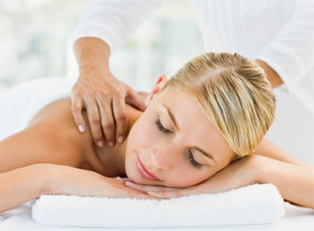Overview and History
Reflexology, which is also known as Zone Therapy, is a type of alternative medicine where pressure is applied to the feet, hands and ears. When pressure is applied to specific zones within these areas, the whole body can experience the benefits of improved circulation and whole body relaxation. Reflexology is mainly used as a treatment for chronic pain experienced because of asthma, back pain, fibromyalgia, cancer, migraine, arthritis and stress.
Some historians suggest that reflexology was created over 5000 years ago in China. Other historians link reflexology to a 6th Dynasty Egyptian tomb, depicting two people receiving massages on their hands and feet. Reflexology was not brought to the United States until 1913. Dr. William H. Fitzgerald and Dr. Edwin Bowers believed that certain pressure points had an anesthetic effect on other parts of the body. Eventually they called this process Zone Therapy.
Later, Eunice D. Ingham, a physical therapist, adapted Zone Therapy to suggest that specific areas of the feet correlate to other organs in the body. Her version of reflexology is now the typical treatment that is used by practitioners today.
Basics
Many people mistakenly believe that reflexology and massage are the same. However, there are several key differences between those treatments. While massage is applied across the whole body and provides local benefits, reflexology is only applied to the feet, hands and ears with its benefits spreading across the body. Massage techniques are applied with large muscle movements and with open hands whereas reflexology uses the thumbs and fingers to apply pressure. Both reflexology and massage offer relaxation and improved circulation. Reflexology, however, also balances the external and internal body systems by stimulating the energy systems.
These energy systems refer to an invisible force, or Qi. One of the principle beliefs of reflexologists is that these energy systems can become blocked. By applying pressure to specific areas of the feet, the energy systems become unclogged, which provides pain and stress relief. Some people suggest that the pressure releases endorphins, which also helps to decrease pain. Others suggest that opening up the energy systems sends a signal to the nervous system.
Uses and Considerations
One of the most common uses of reflexology is to help reduce the pain related to cancer treatment. For some people, reflexology reduces anxiety and pain, but the effects do not last long. Many report that the symptoms return three hours after treatment. Some research suggests that people with advanced cancer do not experience any benefits.
Another way that reflexology is commonly used is for the treatment of specific diseases and ailments. Although some scientists question the validity of reflexology, there are studies showing clear health benefits and a reduction in symptoms. For example, people who suffer from migraine headaches have reported an improvement after reflexology treatment. Reflexology has also been proven to reduce symptoms of multiple sclerosis. After 3 months of treatment, patients saw a reduction in skin tingling, involuntary muscle contractions and urinary problems.
Finally, reflexology has been successful in improving the overall well being of pregnant women. Some evidence suggests that reflexology reduces swelling in the first and second trimesters. Additionally, it decreased anxiety, tension, irritability, stress, pain and tiredness. After the birth of the child, some women reported that reflexology helped with milk production.
There has been some controversy regarding the effects and success of reflexology. While some groups have studied the effects of reflexology, the results are often inconclusive. However, reflexology is relatively safe for all people. It is important to consider what ailment or disease is being treated and whether or not the practitioner is qualified. Some people have noted side effects after treatment including fatigue, nausea and flu-like symptoms. Remember to first consult with your doctor before beginning any treatment plan.



